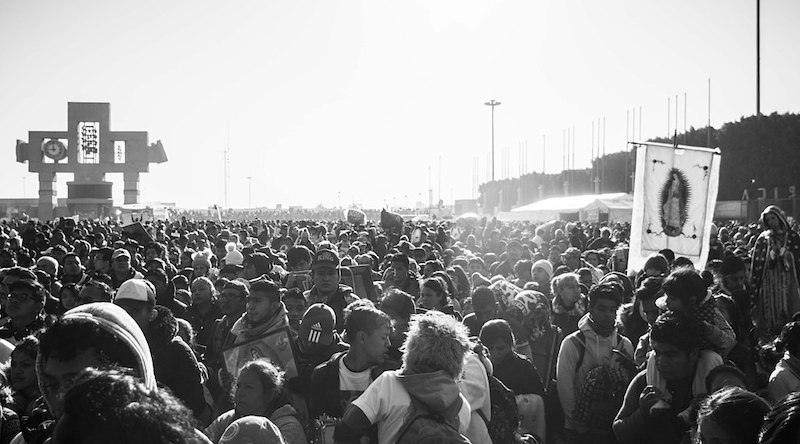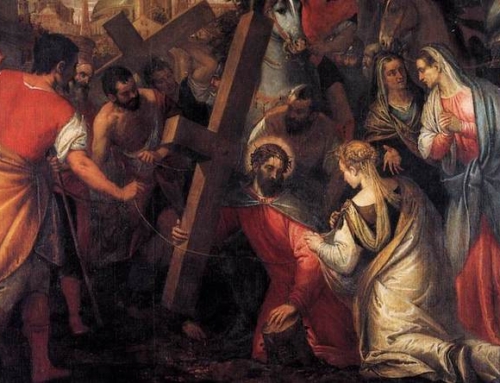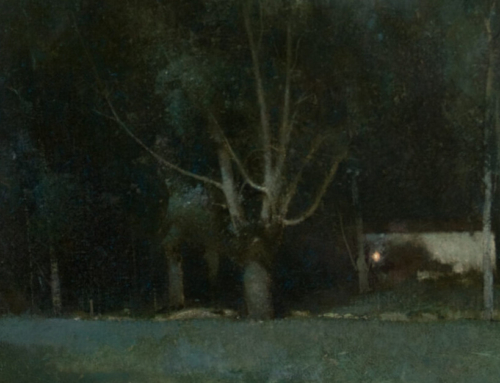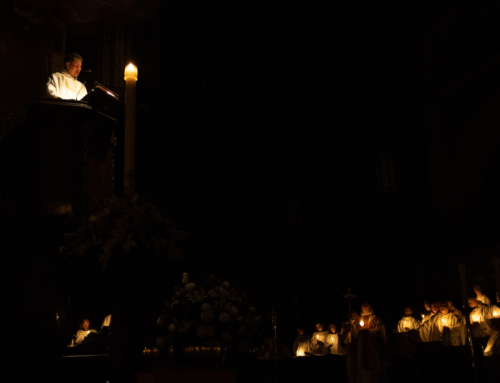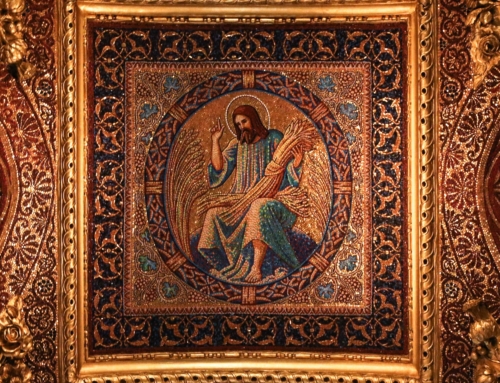This is part of a series entitled, “Pilgrimages: Paths We Tread.” Read the series introduction here. To see other posts in the series, click here.
Our Lady of Guadalupe is integral to Mexican identity, to the point that sometimes the name guadalupano can be a substitute for mexicano. She is a cause of great joy for everyone blessed by her patronage. Speaking of the tender love of la Virgen, macho men are reduced to tears and frail abuelitas regain a youthful vigor. All are welcome under the mantle of the “Empress of the Americas.” Many have died with her name on their lips, and others have been martyred because they dared to speak of her.
The story of Our Lady of Guadalupe is simple: after the fall of the Aztec empire in 1521, Spanish missionaries encountered great difficulties in bringing the Gospel to the indigenous peoples of what is now Mexico.
Much labor, little fruit.
This picture changed dramatically in the cold days of December 1531, when Our Lady left a miraculous image on the tilma of Saint Juan Diego. In the following days and decades, a steady stream of miracles and the first-hand experience of the tilma of Our Lady led millions of indigenous to seek baptism and instruction in the Christian life. In Mary—showing herself as an indigenous mestiza woman—these people found a true mother, and they took her into their hearts (John 19:27). From 1531 up until today, pilgrims have flocked to her mantle, just as the first disciples instinctively gathered at the feet of Mary to pray on the day of Pentecost (see Acts 1:14). And when I say “pilgrims,” I mean lots and lots of pilgrims. One of the largest pilgrimage sites in the world, her basilica in Mexico City annually draws millions (in 2022, 12.5 million for her feast day alone).
On a most happy occasion, I found myself among these pilgrims.
A group from my college was heading to Mexico City with a twofold purpose: to visit the tilma and to meet the poor living on the streets of the city—the littlest children of Nuestra Señora (through a group called Hope of the Poor).
As soon as our plane landed, we headed straight to the Basilica of Our Lady of Guadalupe. As we entered the new Basilica, I was struck by the beauty and stillness of the tilma, and my own heart was drawn into that stillness. You have doubtless seen images of the tilma (from churches to blankets to bumper stickers!), but I tell you that none of them adequately captures the actual tilma of Our Lady. The mantle she is wearing is often depicted as sometimes green, sometimes blue, whether faded or neon. However, the in-person pilgrim will encounter nothing less than an intense greenish-blue that corresponds more to a mantle adorned with dazzling sun and stars (Rev 12:1) than to a simple 500-year old Nahuatl cloak. Pictures cannot capture her beauty! Pilgrims are able to come quite close to the tilma in a viewing area behind the church’s sanctuary. As I stood there in amazement, I heard a whisper in my heart: You’re home, you’re finally home. Well does the Psalmist sing of her: “In you all find their home” (Psalm 87:7, Breviary translation).
Throughout the trip, I met many chilangos (Mexico City natives), especially those living in very difficult circumstances. In every interaction, I had the very real impression that I was meeting the many children of Our Lady of Guadalupe. When I would talk with anyone—with some love and a smile—I always got to mention that I had just visited Our Lady of Guadalupe for the first time, and that I would ask her to help them. Invariably, for each of them, regardless of their many sufferings, I saw a ray of hope dawn in their hearts at the very mention of their mother’s name. In spite of my painfully dreadful Spanish, I frequently became the bearer of some good news: a mom simply wanting to remind her kids that she loves them, and that they need never be afraid.
The story of Our Lady of Guadalupe is as much about the people of Mexico as it is about the tilma. The purpose of the miraculous appearance in 1531 was simple: the Blessed Virgin Mary announced—loud and clear for all to hear (and see!)—that she was adopting the people in the lands of Mexico and, indeed, the whole New World. She came to be their mother. She came for the poor, like those folks I met on the streets during my pilgrimage. Before the inhabitants of the Americas had ever heard of her, Our Lady loved them. From the appearance of Our Lady to Juan Diego until today, holiness has flowed forth into the hearts of countless guadalupanos. Today happens to be the feast day of the martyr Saint José Sánchez del Río. He was hardly even a teenager when he was asked the most important question of his life: “To save your life, will you deny Christ?” . . . “Viva Cristo Rey! Viva la Virgen de Guadalupe!”
That’s the thing about Our Lady. She makes saints. You want to be a saint? Go to her mantle. I wanted to be saint, so I went to her and her children in Mexico City.
✠
Photo by Sigrid Aguilar (CC BY-SA 4.0)

